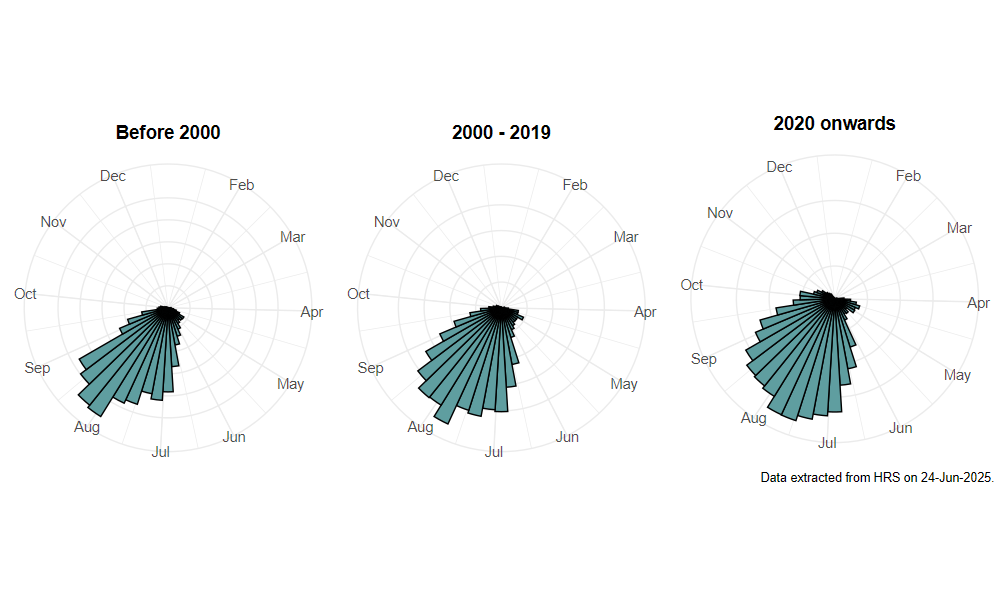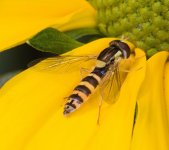Sphaerophoria scripta (Linnaeus, 1758)
Identification
Identification difficulty = 2. ![]()
![]() according to Ball & Morris, 20241
according to Ball & Morris, 20241
Biology
The larva, which overwinters, feeds on aphids and other soft-bodied Homoptera in the ground layer including various crop-aphids. It is found in open grassland, woodland edges, hedgerows, urban waste ground and gardens and, according to Speight(2017)2, tends to be coastal towards the northern edge of its European range and distinctly anthropogenic further south. Adults fly low down amongst, or just above, the vegetation and frequently visit flowers, especially Yarrow Achillea millefolium, white umbels and yellow composites. However, many other flowers, including garden varieties, are utilised.
Flight period
The following plots show the number of unique records per week excluding those reported to be of immature stages.

Distribution
Very common and widespread in the lowlands of southern Britain, north to a line between the Humber and the Mersey. It is highly migratory and the more northerly records probably represent immigrants rather than residents.

Trends
The following plots show the Frescalo TFactor vs year and a map of the rescaled frequency (all records) for the species.
-
Ball, S., & Morris, R. (2024). Hoverflies of Britain and Ireland. WILDGuides (3rd ed.). Oxford: Princeton University Press. ↩
-
Speight, M. (2017). Species accounts of European Syrphidae ( No. 97). yrph the Net, the database of European Syrphidae (Diptera) (p. 294). Dublin: Syrph the Net publications. Retrieved from https://pollinators.ie/wordpress/wp-content/uploads/2018/05/StN-2017-Species-Accounts.pdf ↩
